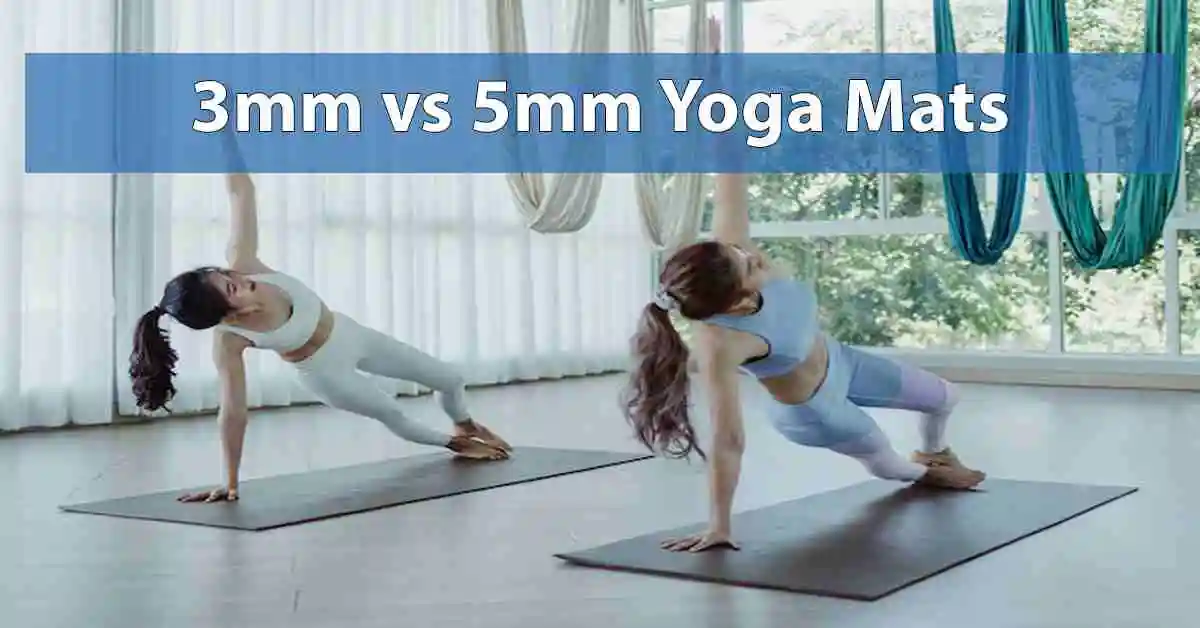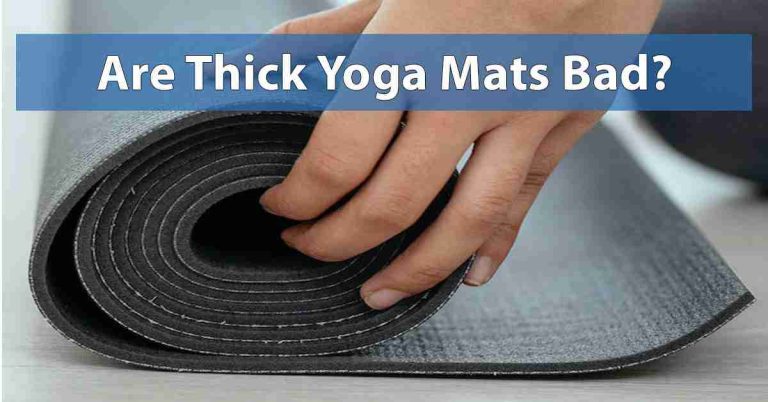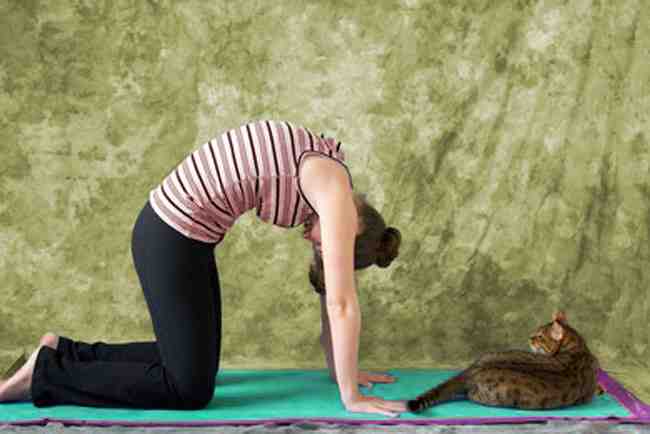3mm vs 5mm Yoga Mat (Discover the Pros and Cons of Each Thickness)
When it comes to yoga, choosing the right mat can make a big difference in your practice. Among the many factors, thickness is a key consideration that can greatly affect your comfort and stability on the mat.
Two popular options that often come up in the thickness debate are the 3mm and 5mm yoga mats. With different thicknesses and unique features, these mats have pros and cons that can impact your yoga practice in various ways.
If you’re in the market for a new yoga mat and are curious about the differences between these two thicknesses, read on as we explore the pros and cons of both, discuss factors to consider when making your decision, and help you determine which thickness may be the right fit for you.
So, let’s dive in and explore the world of 3mm vs 5mm yoga mats!
Pros and Cons of 3mm Yoga Mat

A 3mm yoga mat is popular among practitioners prioritizing portability and lightweight. Here are some pros and cons of using a 3mm yoga mat:
Pros
Portability
A 3mm mat is lightweight and easy to carry around. This makes it a great option for frequent travelers or practitioners who prefer to practice yoga outdoors.
Firm and Stable
A thinner mat provides a firmer and more stable surface for practice, allowing practitioners to maintain better balance and alignment in poses.
Eco-friendly
Many 3mm yoga mats are made of natural materials such as rubber or cork, making them a more environmentally conscious choice.
Cons
Less Cushioning
A thinner mat offers less cushioning than thicker options, which may be uncomfortable for practitioners with joint issues or require more support during their practice.
Durability
3mm mats are often less durable than thicker options and may wear out faster, especially if used frequently or for more vigorous styles of yoga.
Pros and Cons of 5mm Yoga Mat

A 5mm yoga mat is slightly thicker and offers different benefits than a 3mm mat. Here are some pros and cons of using a 5mm yoga mat:
Pros
Enhanced Cushioning
A thicker mat provides more cushioning, which can benefit practitioners who require extra support for their joints, such as in restorative or gentle yoga practices.
Comfortable
The additional thickness of a 5mm mat can provide more comfort during prolonged practice sessions, especially for practitioners who spend a lot of time on their knees, elbows, or back.
Versatility
A thicker mat can be suitable for various styles of yoga, from gentle to more vigorous practices, providing a balance between comfort and stability.
Cons
Heavier
Compared to thinner options, a 5mm mat can be heavier and less portable, making it less ideal for frequent travelers or outdoor practice.
Less Stability
The extra cushioning may reduce the mat’s stability, making it slightly less firm compared to thinner mats, which may affect balance and alignment in some poses.
Environmental Impact
Some 5mm mats may be made of synthetic materials, which may have a higher environmental impact than natural or eco-friendly options.
3mm vs 5mm Yoga Mat
Now you know the pros and cons of both 3mm and 5mm yoga mats. Let’s look at the key differences between a 3mm and 5mm yoga mat, considering factors such as thickness, weight, portability, cushioning, and support.
Thickness
A 3mm mat is thinner and provides a firmer surface, ideal for practitioners who prefer a more stable foundation for their poses.
On the other hand, a 5mm mat is thicker and offers more cushioning, providing added comfort for sensitive joints or those who prefer a softer surface to practice on.
Weight
The weight of a yoga mat can affect its portability, especially if you plan to carry it to your yoga classes or travel with it.
Generally, a 3mm mat is lighter than a 5mm mat due to its thinner profile, making it easier to transport and convenient for those who are always on the go.
Portability
A 3mm mat is typically more portable as it is lighter and thinner, making it easier to roll up and carry in a bag or backpack. On the other hand, a 5mm mat may be bulkier and heavier, which can make it less convenient to transport.
Cushioning
The thickness of a yoga mat directly affects its cushioning properties. A 5mm mat offers more cushioning and can benefit practitioners requiring extra joint support or prefer a softer surface.
In contrast, a 3mm mat provides less cushioning, which may suit those who prefer a firmer surface or do not require as much padding.
Support
The level of support a yoga mat provides can impact your comfort and stability during your practice. A 3mm mat offers a firmer surface, providing better stability for balancing poses and dynamic movements.
On the other hand, a 5mm mat may offer slightly less stability due to its thicker and softer surface.
Factors to Consider When Choosing Between 3mm and 5mm Yoga Mats
Selecting the right yoga mat thickness can greatly impact your overall comfort and enjoyment during your practice. Here are some key factors to consider when deciding between a 3mm and 5mm yoga mat.
1. Personal Preferences
Your personal preferences should be a significant consideration when choosing a yoga mat thickness.
Some practitioners may prefer a thinner and firmer 3mm mat, providing a more stable surface for poses and dynamic movements. Some may prefer the added cushioning and softer feel of a 5mm mat, which can provide more comfort during long practice sessions.
So always consider what feels most comfortable and supportive for your body and practice style.
2. Body Sensitivity
If you have sensitive joints or require additional support, the thickness of your yoga mat becomes even more crucial.
A 5mm mat may be a better option for those with sensitive knees, wrists, or other joints, as it offers more cushioning and can help reduce pressure on these areas. In contrast, a 3mm mat may provide less cushioning and may not be as suitable for those with specific body sensitivities.
3. Practice Style

Your style of practice can also influence your choice of yoga mat thickness. If you practice a more vigorous or dynamic style of yoga, such as power yoga or vinyasa flow, a thinner 3mm mat may be preferred for its stability and firmness.
If you practice a more gentle or restorative style of yoga, a thicker 5mm mat may be more suitable for its extra cushioning and comfort during longer holds and relaxation poses.
4. Intended Usage
Consider how and where you plan to use your yoga mat. If you primarily practice at home on a soft surface such as a carpet, a thinner 3mm mat may be sufficient.
However, if you practice on harder surfaces like hardwood floors or intend to take your mat to studio classes or outdoor sessions, a thicker 5mm mat may provide better shock absorption and overall comfort.
5. Budget
Budget is also a practical consideration when choosing between different thicknesses of yoga mats. Thinner 3mm mats are more affordable than thicker 5mm mats, which may have additional cushioning and features that can drive the cost.
Determine your budget and balance it with your desired thickness and other factors to find a yoga mat that fits your budget.
Conclusion
Choosing the right thickness for your yoga mat can greatly impact your overall practice experience. Both 3mm and 5mm yoga mats have pros and cons, and it’s essential to consider various factors.
Investing in the right yoga mat thickness that aligns with your needs and preferences can enhance your comfort, stability, and overall enjoyment during your practice.
So, take the time to consider these factors and choose a yoga mat that best supports your unique requirements. With the right thickness, you can elevate your yoga practice to new levels of comfort and satisfaction.







